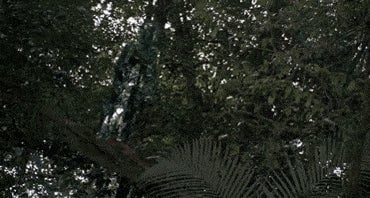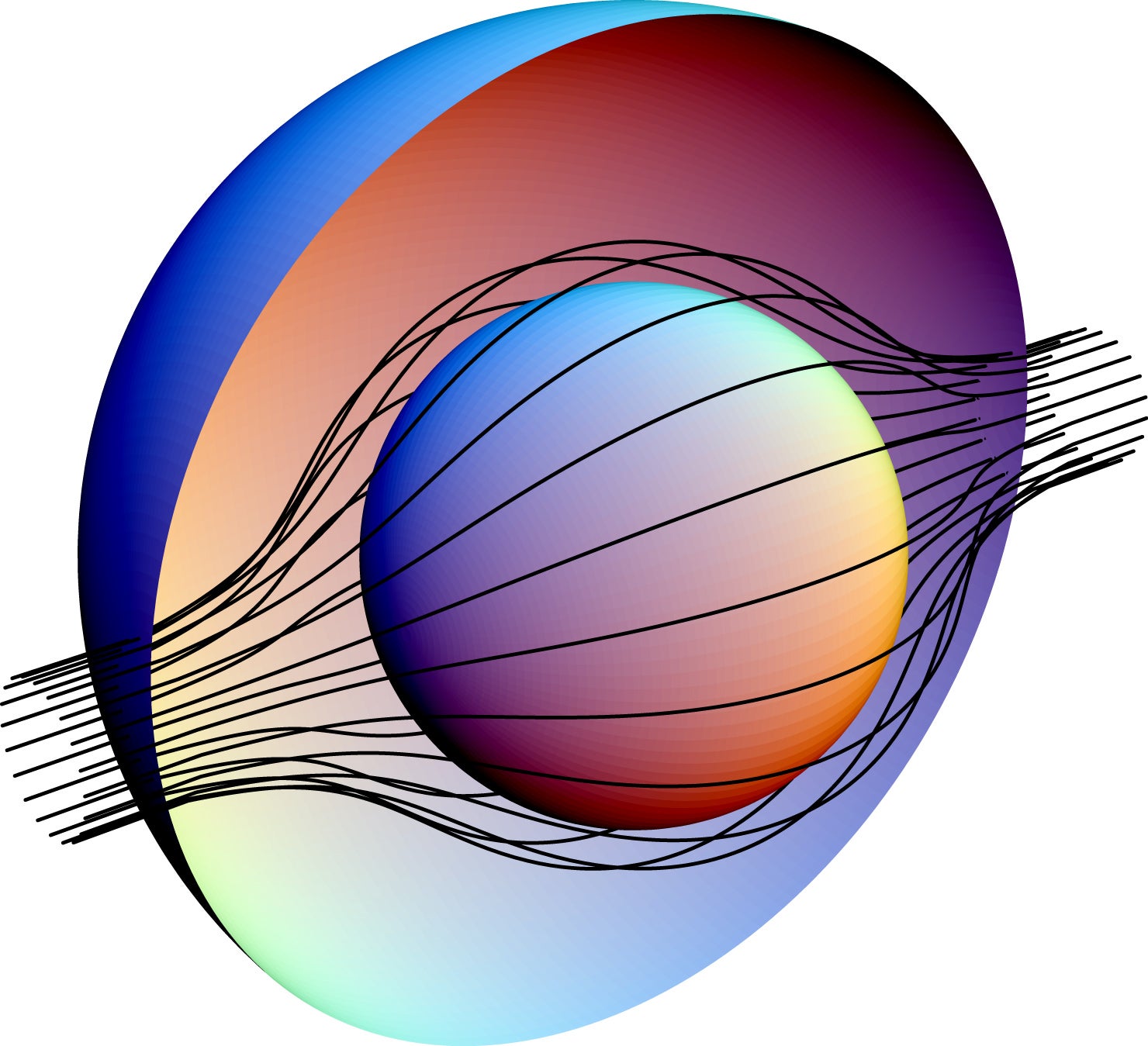Five methods for turning invisible, ranked by the inventor of a real-life invisibility cloak
The captain and crew on the bridge of the starship Enterprise are tense as they track a Romulan ship that has just attacked a Starfleet outpost. The Romulans have developed a new technology: an invisibility cloak, which has made them undetectable to the Enterprise’s sensors. The crew must now figure out how to defeat their adversary, which means understanding the invisibility cloak and exploiting any weaknesses the technology may possess.


The captain and crew on the bridge of the starship Enterprise are tense as they track a Romulan ship that has just attacked a Starfleet outpost. The Romulans have developed a new technology: an invisibility cloak, which has made them undetectable to the Enterprise’s sensors. The crew must now figure out how to defeat their adversary, which means understanding the invisibility cloak and exploiting any weaknesses the technology may possess.
Those familiar with Star Trek will recognize the invisibility device as the Romulan cloak, and the ensuing drama that plays out as the episode “Balance of Terror” from the original Star Trek series. But the Star Trek cloaking technology isn’t just the stuff of fairy tales: It actually has strong links to real-world science.
When fictional future technologies are extrapolated from today’s scientific advancements, we begin to feel that they may one day actually be possible. Presented with a plausible hypothesis, we can explore how a device or technological advance might affect our world long before it is a reality; satellites, robots, space travel, video phones, and submarines all famously appeared in the science-fiction realm before debuting in the real world.
Invisibility has been a recurring and popular theme in the realm of science fiction for decades. May it one day become real, too? Here is a quick survey of some of pop culture’s approaches to invisibility and the hard science behind them.
5. Magic

First, let’s start with the anti-science. Fantasy is a genre closely related to science fiction, except it encourages us to imagine new capabilities with no ties to fact. It is filled with examples of invisibility, from Bilbo Baggins’s ring in The Hobbit to Harry Potter’s invisibility cloak. We don’t need to know the details of how magic works to believe it, but even in fantasy worlds, we find ourselves more engaged if there are rules that govern the magic.
For example, when it comes to Harry’s invisibility cloak, to completely cover yourself and not look like a disembodied head, you obviously need to pull the cloak over your whole body. However, this doesn’t strike your physical presence from space, as seen by how the wearer remains visible on the Marauder’s Map, and it becomes less effective over time as it ages and grows thin. These limitations provide a sense of reality, but if we want to really believe, we should look to invisibility methods that are motivated by science.
4. Chemistry

In The Invisible Man by H. G. Wells, the main character consumes some sort of chemical that changes his cellular chemistry. This makes him transparent—and drives him mad in the process. This approach to invisibility is not entirely fictional. Light moves in a straight line in any medium. However, when it passes from one medium to another, it reflects or refracts. For an object to be invisible, it would need to have the exact optical properties of the medium in which it is embedded.
We can see examples of this in nature. There are species of animals that are nearly transparent to light, like some jellyfish and other sea creatures. The trick is that these sea creatures are always immersed in water, and are also mostly composed of water, so light travels through the animal in a way that makes it difficult to distinguish from water.
Humans are also mostly water, but we live in air. If we wanted to be invisible, light would have to pass through us as if it passed through air—and that would be very hard to do. For this to be possible, every cell in our body would have to change the way it interacts with light. Since the way our cells absorb and scatter light is ultimately linked to biological function, it’s not very likely that we’ll be able to make a living human body transparent through chemistry. (Madness would probably be the least of our worries.)
3. Dynamic Camouflage

Related to invisibility is the closely related concept of camouflage, in which an object is rendered indistinguishable from its environment. This is a far more likely path to making things disappear.
As magicians and con artists have long known, the eye is easily fooled. Quite effective invisibility could be achieved by photographing the background behind an object and projecting that background onto the front of the object, for example.
Many science-fiction invisibility cloaks could be explained as a variation on this theme. In the movie Predator, Arnold Schwarzenegger battles an alien that wears a suit enabling it to blend into the jungle background. As is revealed during the story (spoiler alert), the cloaking is not perfect: You can see an outline of the alien, through which a somewhat distorted view of the jungle can be seen, and the suit requires a power source to maintain the cloaking. These details would all be consistent with some sort of advanced projection device, putting the Predator cloak in the realm of real-life possibility.
2. Bending space/time
As the Star Trek crew grapples to understand the Romulan cloak, their science officer, Spock, suggests that “invisibility is theoretically possible with selective bending of light.” He postulates that the cloaking device causes light to detour around the ship, and since the light never strikes it, the ship therefore cannot be seen. Instead, it appears as empty space, with no light reflected and no shadow.
This theory is backed up by physics. In free space, light travels in a straight line. But it is theoretically possible to bend or warp space itself, which would then pull light along its new curve. This warping of space is possible because of Einstein’s general theory of relativity, which states that mass or energy can modify the fabric of space and time. The writers of Star Trek used general relativity as the basis of many of their speculative technologies, including tractor beams, warp drives, and the Romulan cloak.
The bending of light by the sun was first demonstrated in 1919 by Arthur Eddington during an eclipse, but bending space ourselves is not so easy. It takes an enormous amount of matter or energy to warp space, like the presence of a star or a black hole. We do not yet know how to obtain and control that much energy, and so cloaking by diverting light is still a distant prospect. This also means that the Invisible Woman—Susan Storm of the Fantastic Four universe—must remain in the realm of fiction for the foreseeable future.
1. Cloaking
The idea of making something invisible by bending light is so captivating that, despite the obstacles, scientists continue their attempts to create the effect. And that includes me.

Our group at Duke University, in collaboration with theoretical physicist Sir John Pendry, suggested and later demonstrated one method using a special type of material called a “metamaterial.” Metamaterials are human-made materials with little circuit-like elements—conducting rings and wires, for example—that mimic the properties of atoms and molecules of conventional materials.
Rather than physically warping space, we can use the idea of warping space to find a recipe for a material that will have the same effect. In this way, we can design an invisibility cloak just by picturing the way we would like waves to circulate around the cloaked object. This is a technique called “transformation optics.”
Light—or, in the case of our experiment, microwaves—are redirected in a metamaterial cloak, appearing to bend or flow around the cloaked object. They are then restored on the other side as if they had passed through empty space. The metamaterial cloak is a real device that forces light to flow exactly as it might around a cloaked Romulan ship, which means this type of invisibility device is plausible.
* * *
Science fiction helps us begin to understand how things that don’t exist yet might change the future of humanity. In fantasy, we must often suspend our belief of what is scientifically possible; in science-fiction, we challenge it. The question is not if something is possible, but more if it is feasible. Sometimes that smallest feasibility can eventually be transformed into reality, and when that happens, we will be ready for it, thanks to science-fiction.
As the great science-fiction author Arthur C. Clarke wrote, advanced technology can seem indistinguishable from magic.